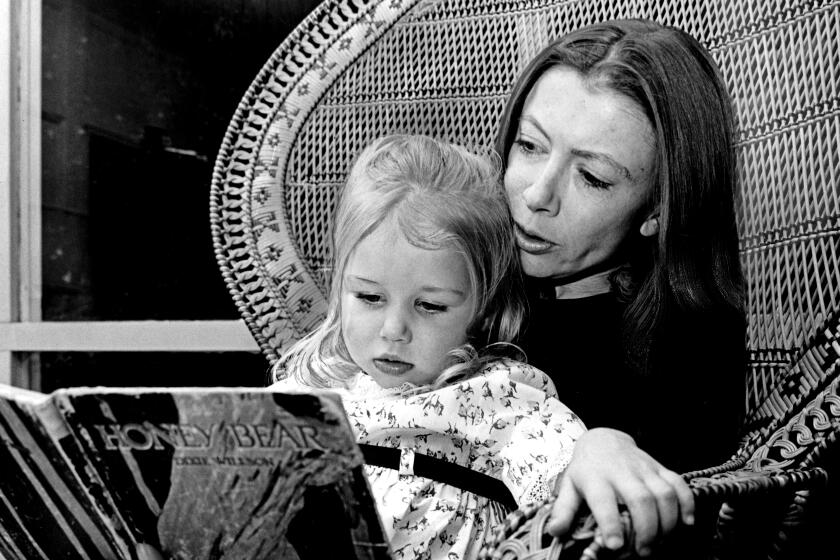‘Never Built Los Angeles’ is a lavish counter-history
- Share via
When, in the 1920s, the pioneering Southern California social critic Louis Adamic called Los Angeles “the enormous village,” he didn’t mean it as a compliment. Rather, he was referring to L.A.’s insularity, its status as what Richard Meltzer would later label “the biggest HICK Town (per se) in all the hick land,” a city of small-town values and narrow vision that “grew up suddenly, planlessly.”
For Adamic, Los Angeles was defined by individual, as opposed to collective, passions, starting with its architecture. His idea of the place as a “garden city,” in which identity was less an expression of the public square than of the private home, has been echoed by nine decades of observers, from Nathanael West (“Only dynamite would be any use,” he sniffs in “The Day of the Locust,” against L.A.’s “Mexican ranch houses, Samoan huts, Mediterranean villas, Egyptian and Japanese temples”) to Norman Mailer, who, in “Superman Comes to the Supermarket,” grouses about the “pastel monotonies” of this “city without iron, eschewing wood, a kingdom of stucco, the playground for mass men.”
A similar sensibility underpins “Never Built Los Angeles,” a compendium of more than 100 architectural projects — master plans, skyscrapers, transportation hubs, parks and river walks — that never made it off the ground. Edited by former Los Angeles magazine architecture critic Greg Goldin and Sam Lubell, West Coast editor of the Architect’s Newspaper, and accompanied by an exhibition at the Architecture and Design Museum, it’s a lavish counter-history of the city as it might have been: a literal L.A. of the mind.
PHOTOS: Plans and models of “Never Built Los Angeles”
“Los Angeles,” Goldin and Lubell explain in an insightful introduction, “lacks the grand gestures of urban innovation. Several of the best houses of the twentieth century were conceived and built here, but the same cannot be said of civic buildings or parks or plazas or monuments. With a few notable exceptions — Los Angeles City Hall, Disney Hall, the Bradbury Building, the Department of Water and Power building, Griffith Park Observatory, and Griffith Park itself — a gift for public architecture and planning is missing. These scattered, almost accidental urban triumphs are so singular that they underscore how little has been done, and how little they alone can do, to piece the city together into a compelling whole.”
The irony, of course, is that it didn’t have to be this way, which “Never Built Los Angeles” embodies at the core. Beginning with Charles Mulford Robinson’s 1907 “City Beautiful Plan” — featuring parks and boulevards around “a new ‘administrative center,’” modeled on Daniel Burnham’s plan for Chicago and Baron von Haussmann’s for Paris — the book traces a century of innovative thinking: some good, some bad.
There’s Robert Alexander and Richard Neutra’s 1950 Elysian Park Heights development, which would have mixed high-rises and garden apartments to provide housing for more than 3,000 families in a pre-Dodger Stadium Chavez Ravine. Or Lloyd Wright’s famous Civic Center plan of 1925, an “acropolis for the city” in the form of terraced walkways amid a complex of massive structures in the middle of downtown. What these projects had in common is a sense of the city as somehow centered, which has been, perhaps, L.A.’s most abiding issue all along.
Nowhere does this resonate more fully than in the Maguire Partners’ 1979-80 proposal for Grand Avenue, “a $700-million architectural exquisite corpse” made up of nine individual projects, designed by, among others, Frank Gehry, Lawrence Halprin and Charles Moore, that “would have connected upper Grand Avenue to the city’s historic core through a series of intersecting parks, plazas, fountains, and promenades, an outdoor theater, and a variety of pavilions for restaurants and cafes.”
As compelling as this sounds, Goldin and Lubell never let us forget the converse: that for every dream, there’s a monstrosity. One of my favorites is an offshore freeway called the Causeway, which would have run along a six-mile chain of artificial islands between Santa Monica and Malibu had Gov. Edmund G. Brown not vetoed it in 1965. Another is Donald Trump’s plan for a 148-story gold skyscraper on the Ambassador Hotel site, which he acquired in 1989. Ultimately, LAUSD took over the Ambassador after a 12-year legal battle.
And yet, despite his New York arrogance (build the world’s tallest building on Wilshire and Alexandria?), is Trump really so different from the tycoons who built Los Angeles? “There’s space here,” Goldin and Lubell argue, “for … reckless self-invention,” which, in many ways, is what “Never Built Los Angeles” is about.
“In the end,” they continue, “cities are never complete, even when they perish. Ghosts of cities past inhabit the ruins and affect us across the ages. Crumbling Mayan temples made converts of Robert Stacy-Judd and Frank Lloyd Wright. The frayed and faded notions of countless others who have sketched and doodled may, in turn, stir new generations to toy with the boundaries of artistic and urban expression and to rethink a place that, to this day, is trying to solve the riddle of what it wants to become.”
Never Built Los Angeles
Greg Goldin and Sam Lubell; Foreword by Thom Mayne
Metropolis Books: 376 pp., $55
More to Read
Sign up for our Book Club newsletter
Get the latest news, events and more from the Los Angeles Times Book Club, and help us get L.A. reading and talking.
You may occasionally receive promotional content from the Los Angeles Times.










